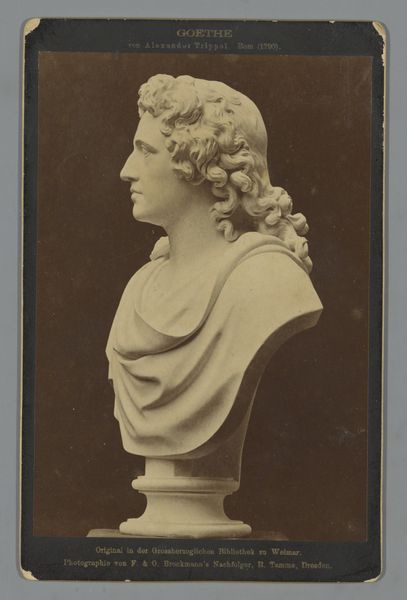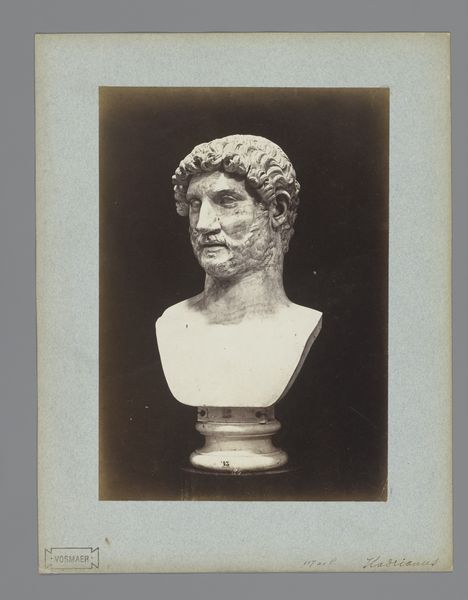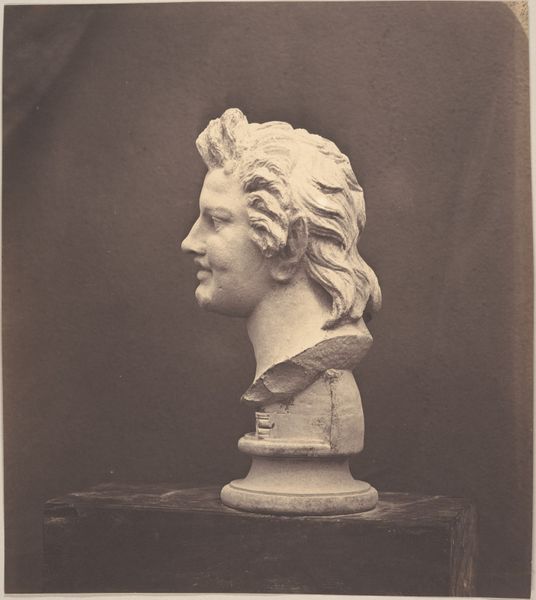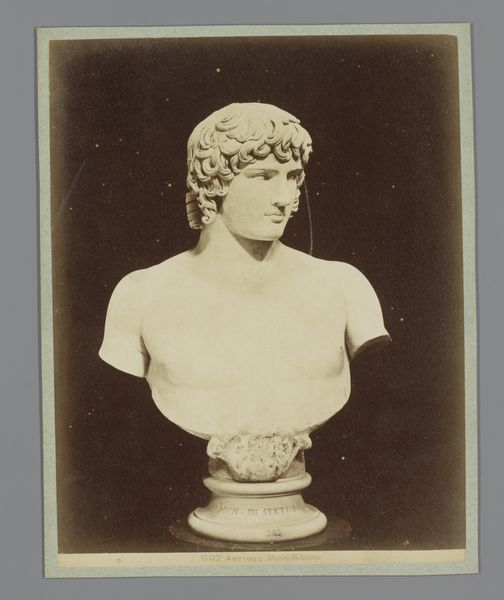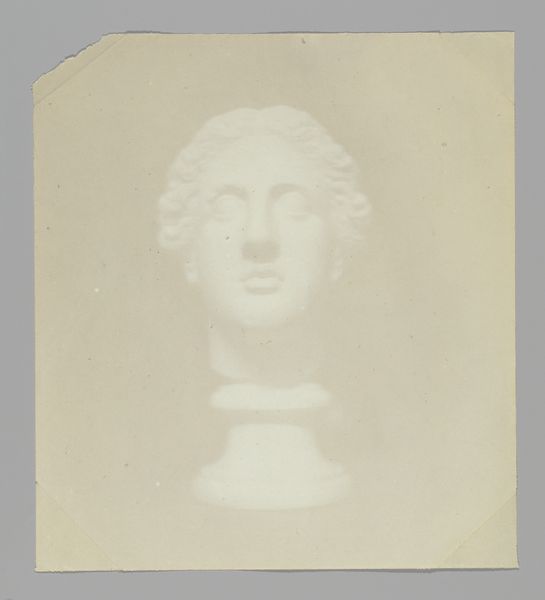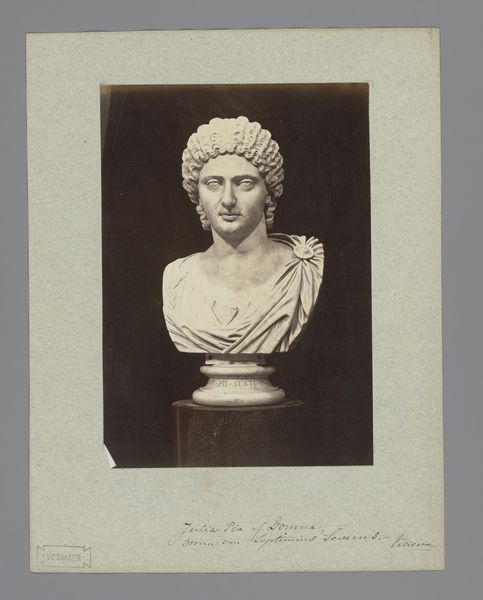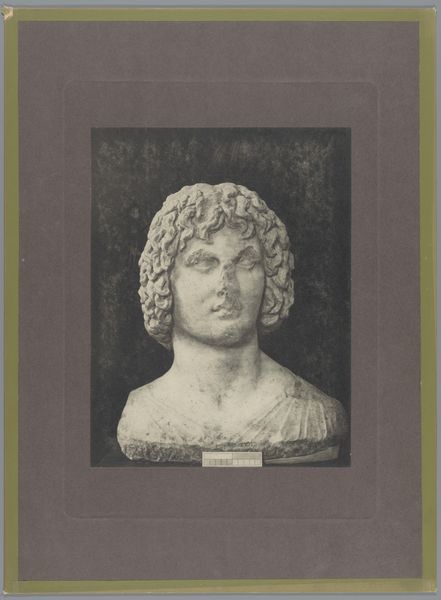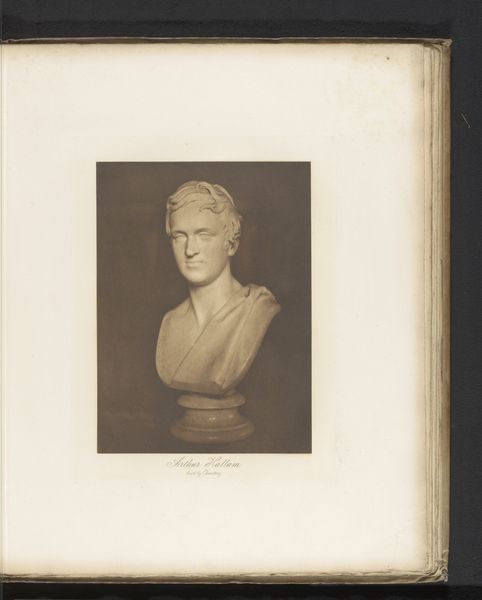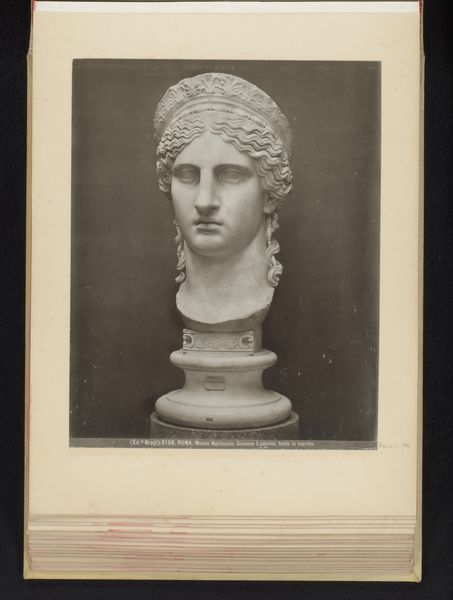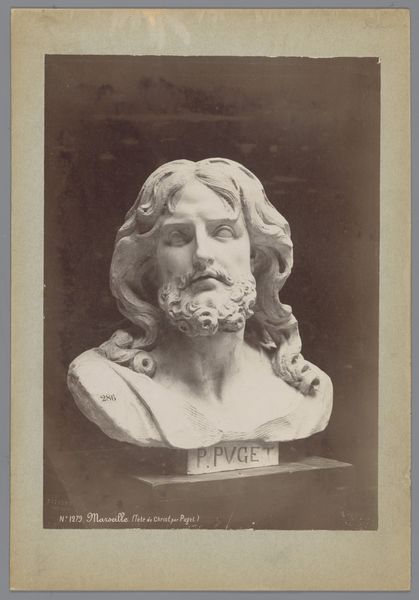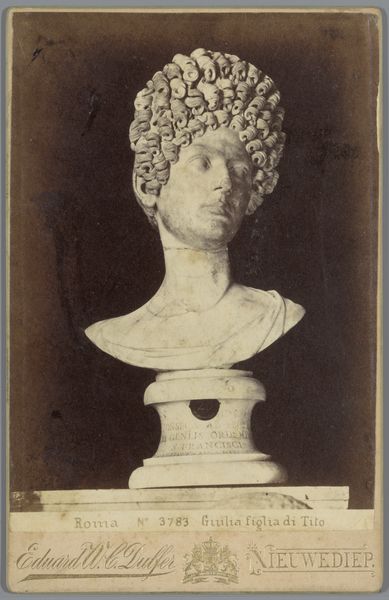
Sculptuur van Schiller door Joh. Heinrich von Dannecker c. 1870 - 1890
0:00
0:00
rudolphtamme
Rijksmuseum
Dimensions: height 164 mm, width 105 mm
Copyright: Rijks Museum: Open Domain
Editor: It strikes me as classically stoic, but somehow incomplete, perhaps because of its monochrome nature. Curator: Indeed. Here we have a photographic reproduction of Johann Heinrich von Dannecker's sculpture of Schiller, dating roughly from 1870 to 1890. This image is currently held at the Rijksmuseum. The photographic technique used to capture it renders the materiality quite starkly, almost emphasizing the subject over medium. Editor: The severe contours certainly emphasize Schiller’s visage, especially around the cheekbones and brow. There's an undeniable air of Romantic idealism projected through this very Classical form. But look at the way light interacts with the marble--or, more accurately, how the photograph interprets that interaction. The tonal range is quite narrow, almost flattening the dimensionality inherent in the three-dimensional form. How was this intended to circulate? Curator: Most likely as a form of artistic documentation and a commodity to broaden awareness of Schiller, and perhaps of Dannecker’s skill too. Think about how photography democratized access to artwork. Editor: It’s interesting how photography here acts almost as a distancing agent. Instead of directly encountering the marble, we see a photographic mediation, one produced through a very different mechanical and chemical process than carving itself. Does this add another layer of historical context in interpreting how the public consumed artworks in past eras? It’s the reproduction process of sculpture, isn't it? What gets lost in translation from the hand to the lens? Curator: Precisely. We see the interplay of original artwork and its later interpretation, which in turn changes the viewing experience. Editor: This prompts reflection upon the intersection of artistic practice and its economic context as it transformed art for many who couldn't afford or reach a statue or other medium in the traditional art market. I find its function equally interesting. Curator: Indeed, observing the reproduction reveals new layers for interpretation and discussion of its artistic roots and context. Editor: Agreed, viewing art becomes more and more interesting as different perspectives give meaning to history.
Comments
No comments
Be the first to comment and join the conversation on the ultimate creative platform.
